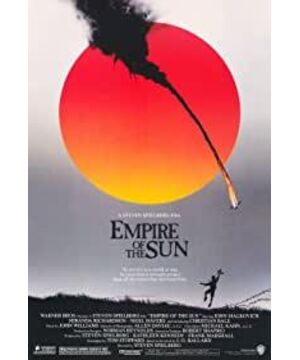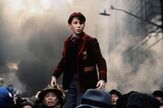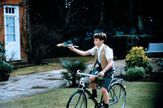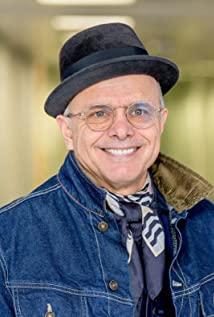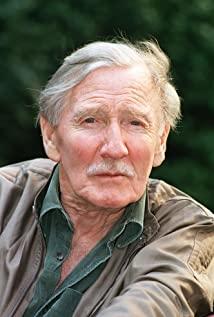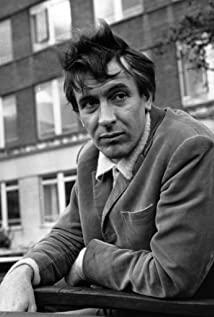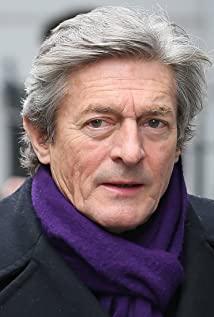It has been more than 30 years since Spielberg shot "Empire of the Sun" in Shanghai in 1987. During this time, Shanghai has undergone tremendous and astonishing changes. Many buildings have sprung up, giving a clear view of the past. The sky of Shanghai is so obscured that it can only be short-sighted.
Spielberg spent 21 days shooting in Shanghai, but in this very short period of time, Spielberg chose the most representative shots of Shanghai to show the story of Shanghai. Although when he was shooting, he used the means of lalang matching, and randomly grouped the unrelated regions with film montages to create a kind of internal spatial connection of the film, which led to the film’s inner space. The lens is distorted, and the explanation of the geographical position is counterintuitive. But Spielberg’s valuable point is that it retains some representative street scenes in Shanghai in the 1980s. In 1987, China was in a state of affairs. The short gaining period on the eve of the great change, so that, with the help of Spielberg's lens, we can see the precious fixation of Shanghai in that particular period.
This section of Jiujiang Road is very classic
In addition to shooting a classic scene of escape from the Jiujiang section behind the Bund, Spielberg also used the Suzhou River as the main location. In this way, Shanghai's roads and waterways have been presented in Spielberg's movies, and Shanghai's iconic regional characteristics have been incorporated into the movie. This cannot fail to see Spielberg’s keen observation ability. Although his time in contact with Shanghai is very limited, he has grasped the essence and core of Shanghai. This indeed shows that Spielberg is a big man. The basic qualifications of a director.
In the movie, Spielberg included the three bridges on the Suzhou River one by one into the lens. For these three bridges, Spielberg did not treat these three bridges equally, but did not balance them. Show it in the lens.
Spielberg’s focus is on the Zhapu Road Bridge. The movie shows the crowds and collisions of the protagonist’s family passing through this bridge. Also carried out time-consuming and laborious old-age treatment.
Zhapu Road Bridge in the movie
Zhapu Road Bridge now
The bridge that Spielberg didn't do the most in the movie was the Waibaidu Bridge. This is completely different from the movies that like to use the Waibaidu Road Bridge as the background when filming in Shanghai.
Waibaidu Bridge in the movie
In the film, when the protagonist’s family passed the Zhapu Road Bridge on their way home from the party, and then drove to the temporary hotel on the Bund, a distant shadow flashed in the camera, and the family of the protagonist could be seen wiping the Waibaidu Bridge. And this shot is a night scene. The scene has not been dilapidated. The cars passing by this bridge actually contain buses from Shanghai at that time. Obviously, Spielberg may feel that it is more difficult to deal with the old Waibaidu Bridge, which is in the traffic artery, so he directly chose to give up, but in the dark, he gestured for a while and used a distant view of the Waibaidu Bridge.
The third bridge over the Suzhou Creek is a little harder to find. I have been searching for which bridge over the Suzhou Creek is the bridge.
This episode shows that after the little boy Jim was separated from his parents, he was walking around on the streets and met an American. The American drove a dilapidated truck, took the little boy into the car, and brought him to a cargo shipyard by the Huangpu River. .
There is a shot in the movie. First, it is aimed at a street. Then the truck driven by the Americans drove towards the camera and turned a bend along the road. The camera also turned ninety degrees in the direction of the car. The Suzhou River appears, and a shadowy bridge can be seen in the distance.
On the skyline, you can also see the spire of the Sassoon Building. On its left is the heavy figure of the Bank of China Building. However, now the sky of Shanghai is full of new buildings. Obscured the sight.
According to Shanghai residents’ memories of Spielberg’s filming, the run-down street where Jim met the Americans was filmed at the intersection of Hengshui Road and Xinhua Road. At that time, large-scale demolition was taking place and there were wolves everywhere. With a piece of jade, broken walls can be seen everywhere. Spielberg used the demolition scene at that time to photograph the old Shanghai that the Japanese ravaged, and vividly restored the scene of a city destroyed by war.
The shot below shows this shot by the Suzhou River. So, where is this shot?
The editor used Baidu's "Street View" function and finally found out where the lens was taken from.
The shooting location of this lens was located at the south bridge of today's Zhejiang Middle Road, and the street corner facing it was Zhejiang Middle Road under the bridge. Let’s take a look at the camera at this intersection.
The current intersection of Zhejiang
Here are the shots from the movie:
The same position in the movie
It can be seen that the slope and width of the alley have not changed much, but it can be clearly seen that the roadside buildings have now been repaired. Let's pay attention to it again, the structure of the roof in the distance is exactly the same as the roof in the movie.
The top floor shape of the right lane in the movie
The same location in Baidu Street View
Full street view
After the camera turned around, we saw a bridge in the distance. This bridge was the Fujian Road Bridge at that time. The bridge in the movie was built in 1968 and was demolished in 2001. Therefore, the bridge is no longer visible on the Suzhou Creek.
We found a photo of the old bridge of Fujian Road Bridge and compare it with the bridge in the movie:
Fujian Road and Bridge in the movie
The Fujian Road Bridge that has been demolished, this is the bridge in the movie
A structural drawing of the original Fujian road and bridge was also drawn in a textbook.
The structure is the same as in the movie
The current Fujian Bridge looks like this, much wider than the original bridge.
Judging from Spielberg’s movie shots, this section of Suzhou Creek is really messy. On the side of the river, you can see rubbish everywhere. In fact, there is another alias for Zhejiang Road Bridge where the camera is located. , Called the garbage bridge. This section was the pier where the feces and urban garbage were collected by the sea. At the end of the last century, when Spielberg was shooting the movie, this section was also the excretion of urban garbage. No wonder in the lens, we can see that this is indeed It's sloppy. However, this bleak atmosphere fits the status quo of Shanghai under the occupation of Japanese iron hoof in the 1940s.
It is worth noting that the Fujian Road Bridge in the distance was built in 1968. In the era when the "Empire of the Sun" story took place, there was only a wooden bridge that could only be used by pedestrians. Status.
Spielberg is almost in this movie about Shanghai. He is everywhere, but it is excusable. We can now see the roads and waterways in Shanghai 30 years ago through Spielberg’s lens. What is it like, this, or Spielberg should be thanked.
The Shanghai lens in "Empire of the Sun"
View more about Empire of the Sun reviews


